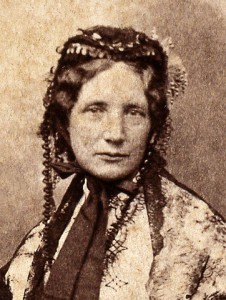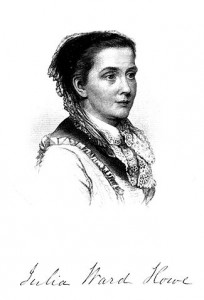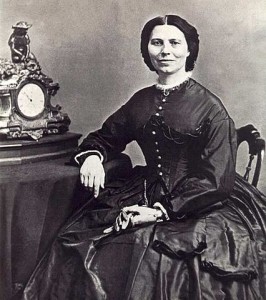Road Trip Through History: Memphis and Cotton

Our first stop on the Great River Road was Memphis--a long day's drive from Chicago.
As we drove into town, My Own True Love and I were still discussing whether we wanted to go to Graceland. Everyone we talked to said it was worth it--even people who weren't rabid Elvis fans. But we planned to spend only two days in Memphis. We had other things we knew we wanted to see.* We continued to weigh the pros and cons as we worked our way through downtown Memphis toward our hotel and Beale Street. Then a sign caught my eye: Cotton Museum. Graceland was toast.
The Cotton Museum is located in the former home of the Memphis cotton exchange, once a center of the global cotton trade.** The museum is set up to reflect the exchange in the 1930s--complete with giant chalk boards listing cotton prices, "markers" who changed the prices on the board as quickly as new info arrived, a Western Union office, a row of telephones, and a cluster of fedora-wearing men making deals. The cotton exchange was an all-male enclave--the first woman to pass its doors was a Farm Security Administration photographer, Marion Post Wolcott. (According to our docent, the men who were there that day grumbled about it for the rest of their lives.) When the exchange officially closed for the day, they settled in to drink bourbon, smoke cigars, and play cut-throat games of dominoes. (Yes, dominoes. I do not make this stuff up.)
The museum was a fascinating combination of the natural history of cotton, the social history of cotton farming from slavery to mechanization (later than you think), the business of cotton, "king cotton" festivals in Memphis, and the relationship of cotton to American music. (When you're in Memphis, music is never far from the discussion. )The physical exhibits are interesting, but the heart of the museum is a series of videos, including a recreation of the operation of the floor in 1939 based on Wolcott's photos and starring current members of the Memphis cotton exchange, which still operates in modern offices upstairs. Some of my takeaways:
- That fluffy white cotton boll is preceded by a short-lived beautiful pink flower, similar to hibiscus, to which cotton is in fact related.
- The gin in cotton gin is short for engine.
- Cotton is "classed" by color, length of the fibers and cleanliness. During the heyday of the exchange, classing was done on the top floor on the buildings on Front Street, known as "Cotton Row", under north facing skylights. It could only be classed in full sunlight.
- Holding a seat on the cotton exchange wasn't cheap: $17,000 in 1939 (roughly $230,000 in today's money). Cotton merchants were Memphis' elite.
This was not our last look at cotton. Stayed tuned.
*Does it tell you everything you need to know about the depths of our nerdiness that we were uncertain about Graceland but determined to go to the Ornamental Metal Museum?
**Surprised? Me, too.
From The Archives: Tough Broads of the Civil War
Just to prove that I've been thinking about nurses and other women who played a role in the American Civil War for a while now, here's a post that first appeared in the Margins in 2011:
- Harriet Beecher Stowe
- Julia Ward Howe
- Clara Barton
I've said it before: If you hang out in Popular History Land, or even Book World these days, it's impossible to ignore the American Civil War and its sesquicentennial. Civil War references are everywhere.
The most recent bit of Civil War "stuff" to start my brain churning was a review of a new book by historian David S. Reynolds: Mightier Than the Sword: Uncle Tom's Cabin and the Battle for America. Reynolds' book looks fascinating. I've added it to my ever-growing To-Be-Read list. But I'm not sure it will have as much impact on me as the first book I ever read on Harriet Beecher Stowe.
When I was in the fifth or sixth grade, our school library got a handful of biographies on American women in history. I'm not sure now if they were a series or separate biographies pulled together by a school librarian with a bee in her bonnet. Either way, I loved the books and read them as often as I was allowed before they circulated on to another school. Although each woman's story was different, they held a common theme: a smart tomboy (or at least a not-very-girly girl) has trouble as a child but grows up to do Something Important. They were balm to my nerdy, not-very-girly soul. They also left me with the abiding impression that the Civil War was a period when women were kicking down doors and doing things they'd never done before.
Turns out that impression was right. Look at the roster:
- Harriet Beecher Stowe's Uncle Tom's Cabin inflamed the North on the subject of slavery. To quote Abraham Lincoln (via Carl Sandburg), "So you're the little woman who wrote the book that made this great war!"
- Julia Ward Howe provided the North with a soundtrack for the war: a little ditty called The Battle Hymn of the Republic.
- Clara Barton, "the soldier's friend", charmed and kicked men in high places until they allowed her to provide comforts and medical care to "her boys" on the battlefield. When the need for her services in the field diminished, she helped the families of missing soldiers locate their fathers, sons, and brothers. After the war, she started a little group called the American Red Cross. Maybe you've heard of it?
- Hundreds of women in both the North and South took the unheard of step of volunteering in military hospitals. (If you want a lively first hand account of one young woman's Civil War nursing experience, check out Louisa May Alcott's Hospital Sketches.)
- Most amazing of all, women cut their hair, disguised themselves as men, and enlisted to fight.* Some followed their husbands or fiancés. Others enlisted out of a sense of patriotism or adventure. For obvious reasons, we don't know how many women fought disguised as men, but an article in the National Archives estimates 250 women fought for the Confederacy and almost 400 for the Union. Most were not discovered until they were wounded or died. At least one woman, discovered and discharged for the official reason of "incompatibility of sex" (The fact that there was an official term of discharge tells you everything you need to know.), suited up and joined a new regiment.
Tough broads indeed.
Who's your favorite tough broad of the Civil War?
*If you want to read a take on this general topic that's hysterical rather than historical, check out Monstrous Regiment by one of my favorite novelists, Terry Pratchett. It will make you both laugh and think. I promise.
The Great River Road–Take 2
As some of you may remember, last year My Own True Love and I planned and abandoned a road trip on the grand scale: driving along the Mississippi from Minnesota to Louisiana on the Great River Road*--or at least as far as we could get in three weeks.
I'm pleased to tell you, we're doing it! By the time you read this, we'll have been on the road for almost a week. The plan is a little different this year. Instead of starting in Minnesota,** we began by headed south. Two days in Memphis. Three days in New Orleans.*** Then back up the river, stopping anywhere that takes our fancy, until we run out of time. (Marginites may want to start a blog-reader pool, betting on how far north we get before we run out of time.) Roots music! Regional food! Historical sites! More historical sites! Not to mention blog posts.
If you have suggestions, we'd love to hear them. Must see historical sites--famous or obscure? Widely heralded sites that are duds? A little town with a great restaurant, bakery, farmers' market or music venue? Let me know.
*Like the Silk Road, the Great River Road isn't actually a single road. It's a conglomeration of local and state roads that cross back and forth across the river.
**Many of the places we want to see in Minnesota close for the winter. I can't imagine why.
***Thanks to Bart Ingraldi's suggestion last year, we plan on spending two of those days at the World War II Museum







